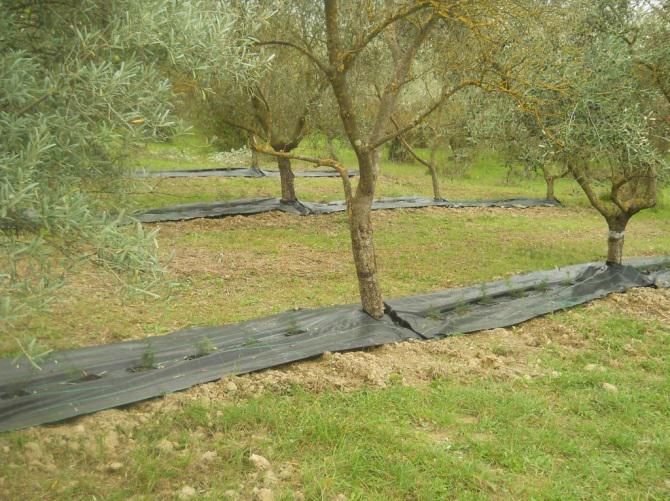
Intercropping and grazing of olive orchards in Italy
Description of system
Over one million ha of olive (Olea europea) orchards risk abandonment in Italy, since the low price of olive oil and the de-coupling of subsidies from production have reduced profitability. Since removing trees is illegal, the orchards risk large scale abandonment. The particular focus of this system is the intercropping of wild asparagus (Asparagus acutifolius), a species, which has an already established market for its spears, and naturally tends to grow in abandoned olive orchards. Grazing animals, particularly chickens, are proposed as an additional source of income while providing weed control and fertilization, thus lowering costs and impact of the orchard management.
Initial stakeholder meeting
The first meeting of the stakeholder group on 27 June 2014 was attended by 21 people. The meeting started at the CRA conference room in Spoleto, Italy, and included a field visit to an olive agroforestry system with poultry grazing. This was followed by a field visit to the experimental farm of CRA, where wild asparagus have been intercropped in both a traditional and a super-high-density olive orchard, as well as in an open field without trees. The key positive aspects of the agroforestry system were thought to be soil conservation and animal health and welfare. Negative aspects included complexity and issues of mechanization. Potential innovations were best practices for growing wild asparagus in the olive orchard, the use of portable butchering facilities for processing the meat at small scale, and other viable crops with good marketability. If you would like to know about the activity of this group, please contact Dr. Aldofo Rosati (adolfo.rosati@entecra.it) at Consiglio per la Ricerca e la Sperimentazione in Agricoltura (CRA-OLI)
Download the initial stakeholder report
Download the initial research and development protocol
A research and development protocol was produced in March 2015
Download the system description
A research update on the intercropping of olives in Italy was produced in November 2015.
Lessons learnt
In a report produced in September 2017, Adolfo Rosati describes the results of the experimental work. He concludes that growing wild asparagus in olive orchards is technically possible and that the high price of asparagus spears results in increased revenues. However the system requires additional labour and skills. The report also identifies narcissi and tulips as good alternative intercrops since their vegetative cycle begins after olives are harvested in the autumn and concludes in the spring before the olive trees are pruned. A brief two-sided innovation leaflet describing the olive-asparagus system has also been produced.